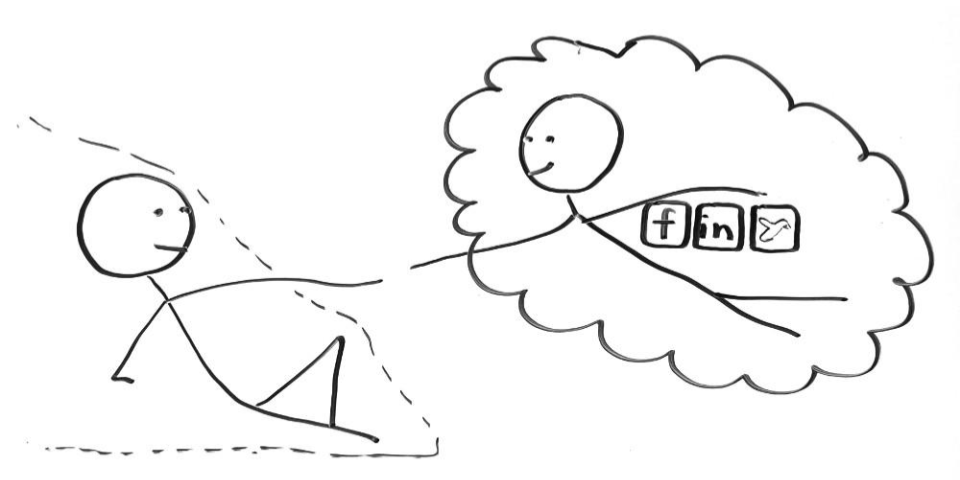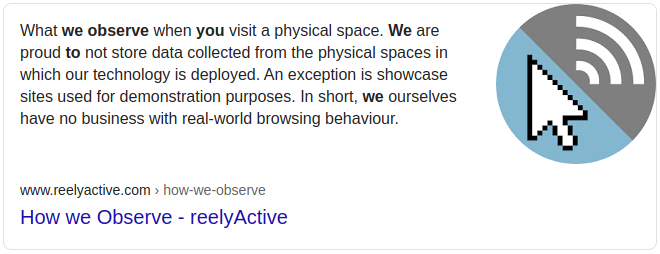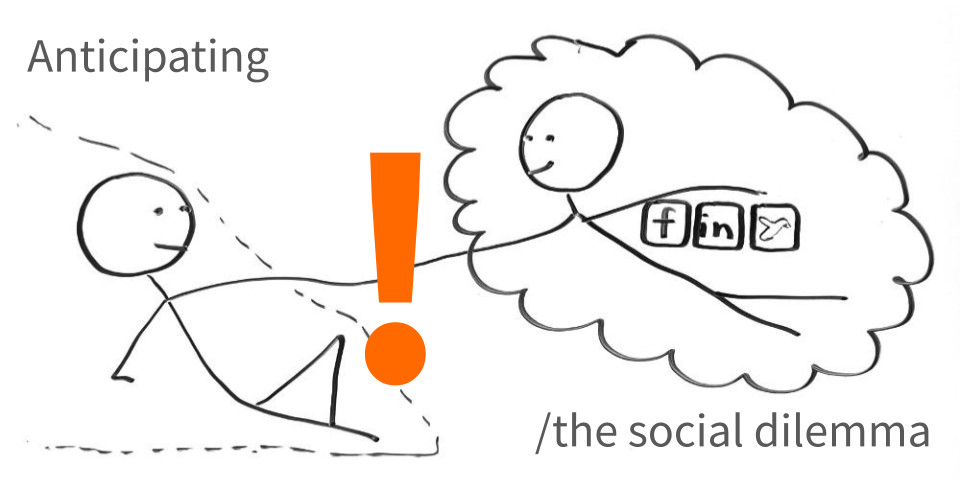Three days ago, on September 9th, 2020, Netflix released The Social Dilemma which “explores the dangerous human impact of social networking, with tech experts sounding the alarm on their own creations.” A recurring theme in the eye-opening documentary-drama hybrid is how technology is manipulated to disconnect “users” from their own reality, and to predict and influence their behaviour. This disconnect is essentially what the co-founders of reelyActive attempted to represent with the first slide of our first pitch deck at the FounderFuel accelerator in 2012:

We kicked off that pitch arguing that our information is increasingly becoming digital, but the human world isn’t digital! Did we correctly anticipate The Social Dilemma? In this post, we’ll journey from 2012 forward to the present day to revisit our thoughts and actions on this subject.
In 2013 we blogged about Physical Expression, Digital Expression, and the Penis T-Shirt (oh, do we have your attention now?) where we argued that
As long as digital expression is curated by physical presence, we would expect [individuals to abide by the norms of real-world social interaction].
That year we created the aptly named Log in to Life experiment which flipped the industry paradigm, enabling digital content to accompany one’s physical presence. Demonstrating this at StartupFest was key to us securing a trip to the Startup World Finals in SF later that year, where we toured Facebook, to which we hinted Facebook, you might “like” this. That same week we won the title World’s Best Startup with the following pitch:
Indeed, the Internet of Things seemed poised as the catalyst for The Age of Hyperlocal Context in which we were not alone in arguing that
it seems self-evident that we should own our own data and that any third-party should need our permission to use it.
In 2014 all the technologies were finally in place for a manifestation of Log in to Life to scale, which we pitched to industry players in our “Advertise Yourself” keynote at Bluetooth World. We felt the shift from Smart Phones to Smart Spaces was set to begin, as we illustrated in the following video which long graced our landing page:
Should technology interrupt us from living in the present moment? Of course not!
In 2015 we crafted our first privacy policy in line with our mission, which concluded with:
Wish we had more to tell you but honestly, we really want to have as little as possible to do with your personal information aside from enabling you to share it when you want, where you want and with whom you want!
Of course, championing the notion that your data is your data was, and sadly still is, far from conventional. In The Bank of Personal Data we quoted Roberto Minerva at the IoT World Forum in Milan, where we published more of our research, jokingly responding to our question about managing personal data:
You put your money in a bank, and the bank acts as a broker for you, investing your money as you see fit. But the money always belongs to you. Of course this is not always the case in Italy…
Indeed, as The Social Dilemma confirmed for personal data, neither is this always the case in the technology industry…
In 2016 we were prompted to ask the question, is reelyActive a social network?
The answer: No. “Where we think we’ll have an impact is on the future of social networking.” And we speculated on that future with The IoT as your Brand Ambassador.
The IoT acts as our real-time brand ambassador, compiling the relevant information beyond our limited scope and calmly delivering it to us in our here and now.
By 2017, there was no reason why a social network could not reconnect their “users” with their physical reality and context, and we predicted that 2017 would be the year one would do just that. Moreover, we demonstrated how Google had inadvertently created the underlying technology to “Advertise” yourself with the Physical Web, and beyond…. However, whenever we’d meet at conferences, Scott Jenson, then head of the Physical Web, would always specify that “Google does not intend it to be used for that.”
So why wasn’t this happening? Why weren’t we Creating the next computing industry? In an e-mail exchange with Alan Kay that same year, he argued that
“the goodness of the results is most highly correlated with the goodness of the funding”
Indeed that was representative of our experience as a technology startup in the 2010s: there was no shortage of available funding, but, alas, no longer the good funding characteristic of the era when Kay was successfully “inventing the future”.
By the end of the year, Facebook boasted 2 billion monthly active users to which we argued—in vain—for the sake of a struggling retail industry, Facebook, it’s time to “share” your view of the customer.
In 2018 we wondered about Digital avatars in meatspace, and the absence thereof and the economic model Beyond People-as-a-Product. And then we began to observe a refreshing shift in attitudes, especially in Europe where we attended the Pirate Summit. This provoked Self-reflection: rethinking ownership where we imagined the world we’d live in today if the likes of Twitter, Instagram, LinkedIn and Facebook weren’t beholden to shareholder value.
what if each company could put their founding purpose first, ahead of investor interests?
We attempted to transition reelyActive to steward-ownership to enshrine our founding purpose but were again met with a dearth of good funding to pursue such good results. Our team did however sign The Copenhagen Letter which enshrines our values as a technology company at the service of humanity.
Perhaps there was Still Place for optimism?
In 2019 our traditional April Fool’s post, 5G and the Digitally Conjoined Twin, where personal data was stored in a computer literally strapped to one’s arm, had become more satire than tongue-in-cheek.
“With this setup I can literally pull the plug on my data at any time. It’s a USB cable connected to a power pack.”
We committed to full transparency on How we observe both online and physical behaviour.

At the Collision conference, we adopted the view that Data is Human, and the philosophy of Immanuel Kant:
“Treat people as an end, and never as a means to an end.”
Finally, we found solidarity with the tenets of Who owns the future? by Jaron Lanier, who, unsurprisingly, features prominently in The Social Dilemma.
Taking comfort in our alignment with Lanier’s hypothesis and predictions in this critical look back at our past seven years, we shall indeed press on, continuing to keep people in the centre of our vision for the future.
And now in 2020, what can we say looking back with 20/20 (ugh) hindsight? Did we anticipate The Social Dilemma? Yes. Did we advocate for and work tirelessly towards a human-centric alternative? Yes. Did we share this openly with the likes of Facebook, Google and the public? Yes. Is there still cause for optimism? Yes. Why?
As Buckminster Fuller (who tops our bibliography) wisely argued:
You never change things by fighting the existing reality. To change something, build a new model that makes the existing model obsolete.
If you’ve read this far (thank you!) you’ve surely gained a strong sense that we champion a new model where:
- your data is your data
- digital serves to enhance the physical human experience
- contributing entities enshrine purpose over profit
And, as The Social Dilemma suggests, there’s never been a better time than now to make that new model a reality—a human-centric future as our collective reality.

Comments
One response to “Anticipating the Social Dilemma”
[…] an entire data industry just as much, if not more, than we the users ourselves (see our post Anticipating the Social Dilemma). Which raises the question of whether a Smart Space best describes one which truly serves its […]
LikeLike